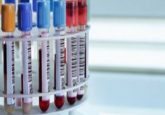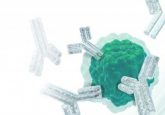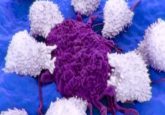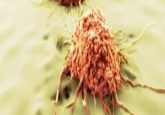Advancing immunotherapy for high-risk neuroblastoma patients: an interview with Juliet Gray
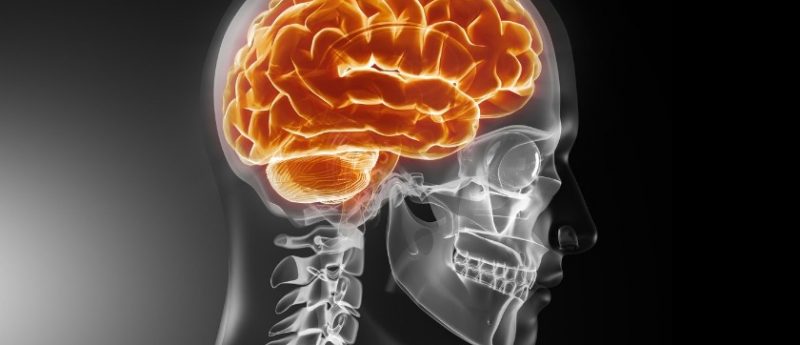
The European Commission has recently approved dinutuximab beta for high risk neuroblastoma patients over the age of 12 months, making it the only approved immunotherapy in Europe for this group of patients. In this exclusive interview with Oncology Central, Juliet Gray from the University of Southampton (UK) tells us about the impact this approval may have and provides her insights into the field of immuno-oncology.
- Could you tell us about the clinical significance that the approval of dinutuximab beta may have for high risk neuroblastoma patients?
Neuroblastoma is one of the commoner childhood cancers, and usually affects very young children, mostly under 5 years of age. Unfortunately in the majority of children the disease has metastasised by the time of diagnosis, and outcome is poor despite intensive chemotherapy, radiotherapy and surgery. Immunotherapy with ant-GD2 monoclonal antibody therapy has been shown to improve outcome in these children. In the last 5 years, the majority of children in the UK and Europe with high risk neuroblastoma have received this antibody as part a trial run by the European Neuroblastoma Research network (SIOPEN) , and it is now considered part of the standard of care for these tumours. We therefore welcome the fact that it is now approved for use in these children.
2. This immunotherapy has been extensively investigated in clinical trials, with over 1000 patients having received the treatment to date. Can you give us an overview of the main findings of the latest clinical trial for dinutuximab beta?
In 2010, the Children’s Oncology Group in the US reported the results of a randomised clinical trial in which children with high risk neuroblastoma had either received standard treatment, or had received additional immunotherapy with the ant-GD2 antibody dinutuximab. The antibody was given with two immune agents, GM-CSF and IL-2. The main side effect of the antibody was pain, as the GD2 is found on pain nerves as well as neuroblastoma, and children required morphine infusions while the antibody was given. The results from the trial were impressive, in that at 2 years, 20% more children had relapsed in the group that had standard treatment, than in those that had received the antibody as well.
Dinutuximab beta is similar, but not identical, to dinutuxiamb that was used in the US trial, in that the antibody is grown in different cells, and has some different properties. Dinutuximab beta has been used in European SIOPEN trials. In children with high risk neuroblastoma who have had a good initial response to chemotherapy, the outcome with dinutuximab beta appears to be broadly similar to that seen in the US trial of Dinuximab – although no direct comparison has been performed. In the European trials, dinutuximab beta has been given without GM-CSF, and children have been randomised as to whether they receive additional IL-2. This will establish whether this cytokine, which substantially increases toxicity, is needed to achieve efficacy. A second SIOPEN trial has investgated giving dinutuximab beta as a continous, 10 day, infusion, in children with relapsed and refractory neuroblastoma. This study has found that this prolonged infusion significantly reduces pain and other toxicities, and the need for morphine analgesia is much reduced. This study showed a 50% objective response rate (complete or partial responses) in children with measurable neuroblastoma.
3. In your opinion, what does the future hold for immunotherapy?
I think the next few years will see increasing use of immunotherapies in combination with other therapies – either other immune agents, but also conventional chemotherapy drugs and even radiotherapy. We are just learning about how, in the correct dose and schedule, some chemotherapy drugs can actually enhance the immune response, and may improve efficacy of antibody therapies. Until recently, we have given children incredibly toxic chemotherapy, surgery and radiotherapy, and then given anti-GD2 antibody afterwards, with the aim of clearing any residual tumour cells. We are now exploring using the antibody upfront, with chemotherapy at diagnosis.
4. What are the main obstacles impeding the further advancement of immunotherapy for neuroblastoma patients?
The main immediate obstacle is the cost. Dinutuximab beta, like many new cancer drugs, is very expensive, and will need approval by the National Institute for Health and Care Excellence (NICE). It will need to be shown that the antibody not only offers clinical benefit to children, but also that it offers value for money to the NHS. Without this approval, it will not be possible to continue to provide the antibody to children in the UK with neuroblastoma.
5. How do you think these can be overcome?
It is very difficult, as there are huge competing demands on NHS funds. My belief is that antibody improves outcome for this small population of children with a very challenging cancer, and that future combinational studies will improve outcome further.
6. Where do you see the field of immunotherapy in 5-10 years?
As well as more combinational studies, I also think immunotherapy will become more personalized to individual patients. We already know that patients with some particular genetic immune polymorphisms are more likely to benefit from anti0-GD2 therapy. I think we will become better at assessing the immune profile of both the patient and their tumour, and tailoring the immunotherapy towards it. This will avoid giving expensive, potentially toxic, therapies to children who are not likely to benefit from them.
Biography
Dr Juliet Gray is an Associate Professor in Paediatric Oncology at the University of Southampton, and Southampton Children’s Hospital. Her main clinical and academic interest is immunotherapy for neuroblastoma. She is a member of the UK NCRI Children’s Cancer and Leukaemia Neuroblastoma group, and an executive member of the European Neuroblastoma research network, SIOPEN.
Financial disclosures or conflicts of interests: N/A
